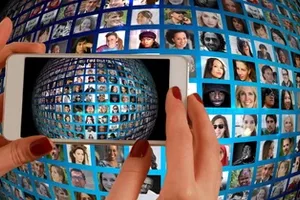This is the third article in a three-part series dealing with the importance of personalisation in customer service. The first article started with a focus on the importance of customer retention and the increased importance of personalised customer service for customer retention. The second article then briefly looked at how the impact of technology on customer expectation and this interaction is shaping personalised customer service. In this article we explore some practical examples of how technology can be leveraged to deliver a killer personalised customer service.
Customer Service at Pre-Sales
A customer’s first experience of a business is typically before they are a customer. They might have heard about the business from a friend, seen an advert, got to know about a product or even tried a product. At some point, this anonymous person can ask for a quote or for some information, meaning that there is now a name and a need. Here the business can start to collect information about this customer and about their need. This information needs to be stored, processed, and carefully considered before the business can revert with the appropriate information. Accuracy of response as well as timeliness are crucial to giving the prospective customer a good service.
Information systems such as CRM systems are crucial at this stage to ensure that
- All customer information is accurately recorded;
- Customer preferences are known;
- Customer interactions are noted;
- All requests are responded to in a timely manner; and
- Follow-ups can be appropriately made.
Customer Service while Closing the Sale
The availability of a central store of this customer data, that is available to employees in the business, means that, anyone who responds to that prospective customer or who follows up on a request, will get back to the customer with the appropriate knowledge of the customer and with the knowledge of what other colleagues have discussed. This is key to giving the prospective customer a seamless communication experience, even though the actual people might change in different parts of the conversation.
Customer Service during Product or Service Delivery
Once a customer accepts a quote and agrees to purchase the product or service, the information collected about the customer needs to be augmented with the new order information as well as the delivery preferences of the customer. All this information stored centrally and shared across the business arms employees to give a very personalised communication to the client and to ensure that the service is impeccable. A client should not need to say anything more than once to a supplier. Technology is a great enabler to ensure that this takes place. Consider the pampered feeling a client gets when the delivery person is aware of all the discussions that happened pre-sales and of all the client wishes. The business can treat the customer like royalty, rolling out a red carpet for them to walk on. The customer is, after all, a critical stakeholder in the business.
Customer Service in Non-Core Communications
Once a customer has been served and delivery of the product or service is complete, the customer still has interactions with the business. Finance are possibly one of the more common interactions where clients are frequently chased for payments. Availability of the complete customer story in a system at the debtor collection stage can enable debt collection employees to engage in a more meaningful conversation with the client, to maintain the relationship, ask about the actual product and experience while still collecting the dues. Relationship is key and a continued stream of coherent communication with the client is a strong foundation upon which personalised customer service is built.

Customer Service in After Sales
Should something ever go wrong with the product and should the customer need to contact customer service for any reason, the employees in that function, through technology, should have all the customer history available before they respond to the call. The customer can therefore feel that the people answering him already know who s/he is, what s/he purchased and when and all this before the customer has even mentioned any problem or concern they could have. How refreshing it is for a customer to feel like the unique human individual they really are in a world of impersonal mass communications.
Technology Powers the Complete Customer Service Cycle
Throughout all the customer interactions, with a business, the main benefits that technology drives are:
- A single version of the truth about a customer that is always available to all employees;
- This facilitates that the customer receives the same clear message from all employees in the business;
- In addition, the actual communication channels available through technology also enrich the communications.
Having all these online and offline channels connected to and feeding the same information system means that this smooth and seamless conversation with the customer can move across employees and across communication channels without changing the message in any way. It means that the business is empowered to give personalised customer service thanks to the technology it employs.


